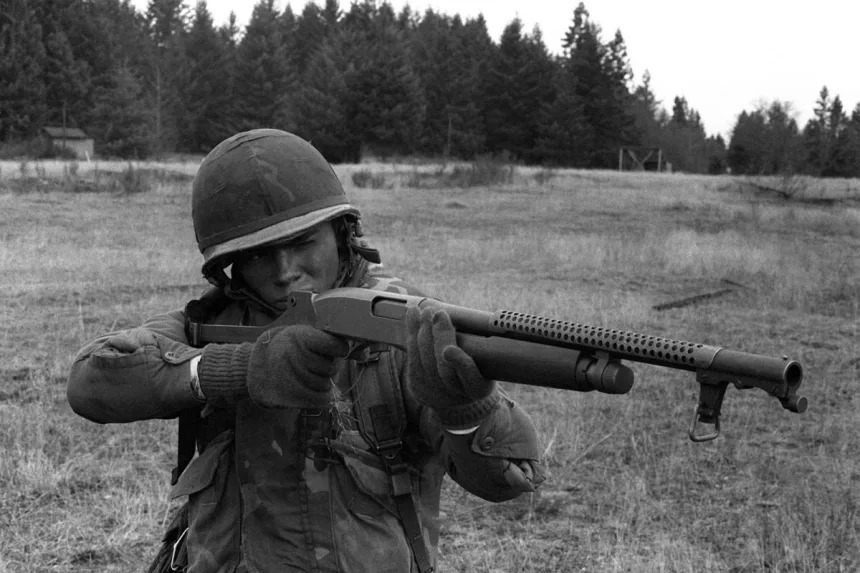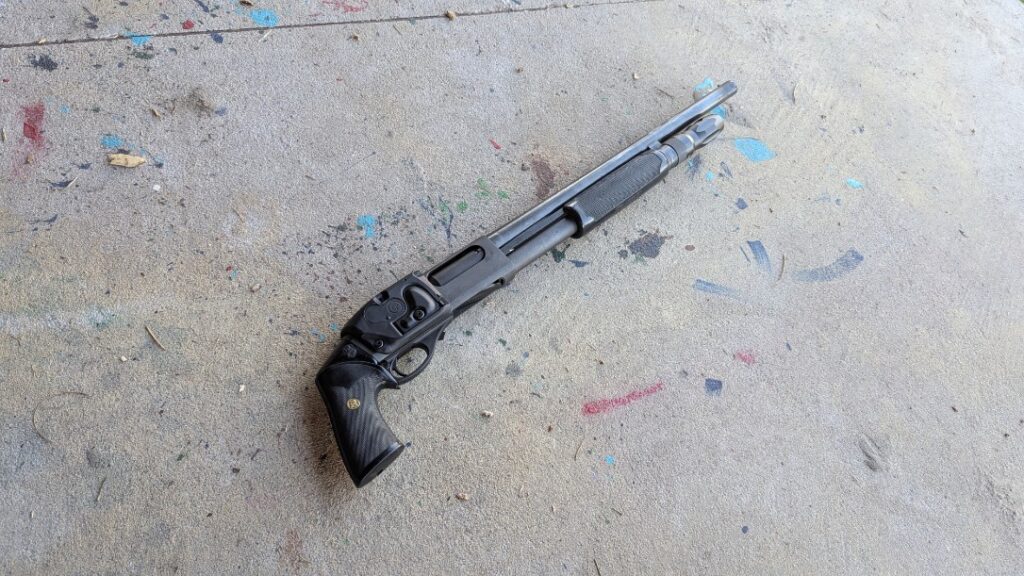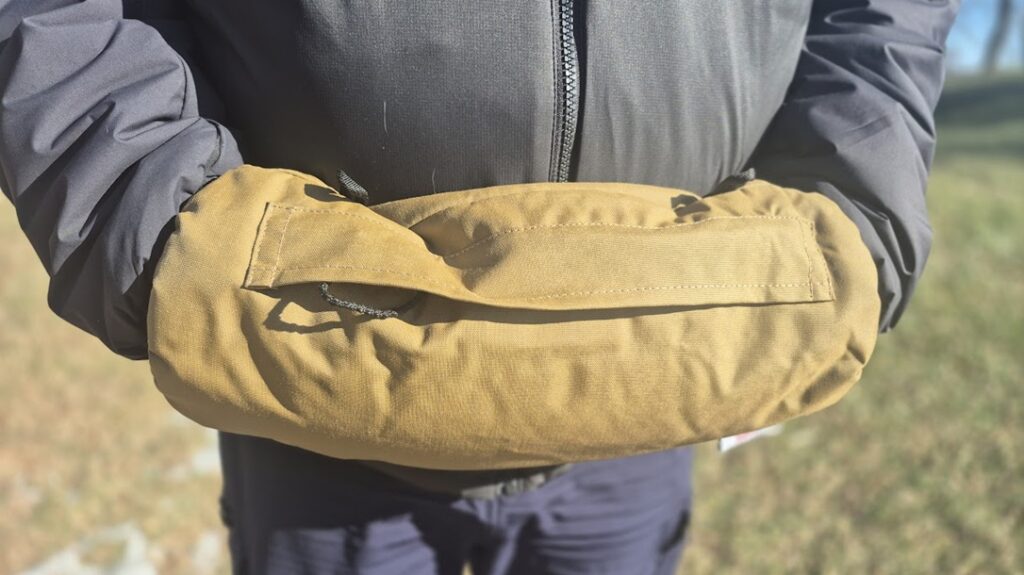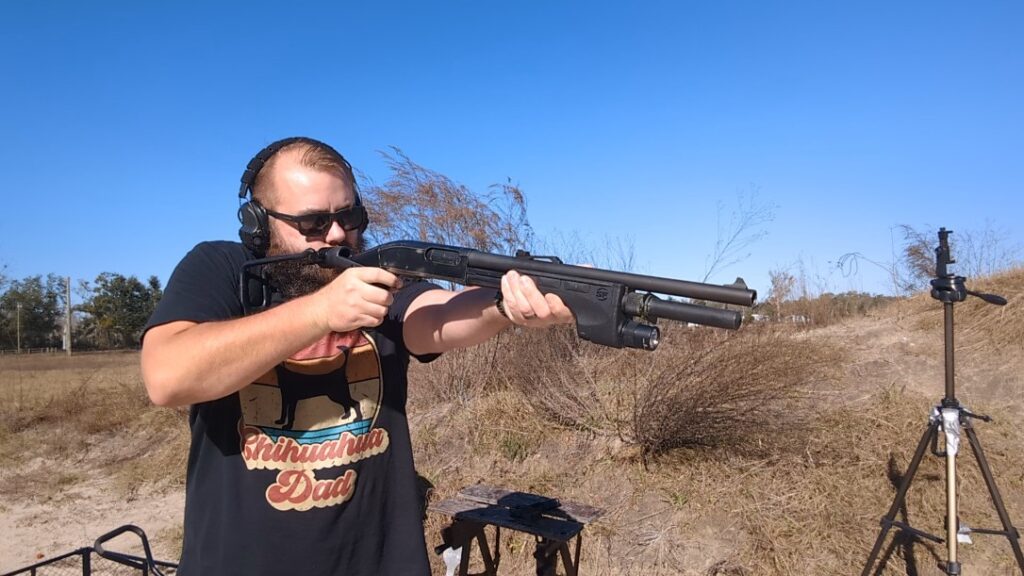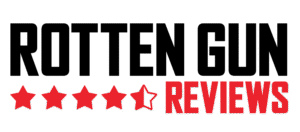Does the combat shotgun still matter in modern warfare? Does it have a place amongst the infantry or with civilian minutemen? Has the combat shotgun been replaced with the light and maneuverable 5.56 carbine? It would certainly seem so. As a very biased source, I do think the combat shotgun is still a capable weapon that excels in a few niche roles.
The Combat Shotgun
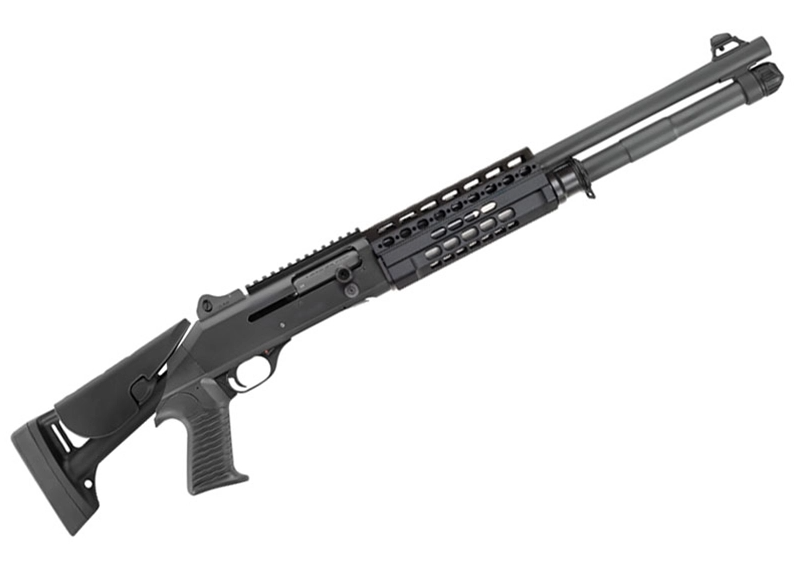
When I say niche roles, I don’t mean breaching, anti-drone operations, or even less-lethal options. That turns the shotgun into a tool rather than a combat shotgun. There is a difference, and while the tool use of the shotgun is notable, it’s not what I’m discussing today. I want to talk about the shotgun as a combat weapon.
Advertisement — Continue Reading Below
Where It Falters
The downsides to the shotgun are numerous, especially compared to the carbine. A shotgun, loaded with buckshot, has an effective range of about 50 yards with basic buckshot ammo. Even 50 yards is a bit generous, and it excels within 35 yards and closer. Those shotgun pellets can still kill and seriously harm beyond those ranges, but it’s less likely to hit where you’re aiming.
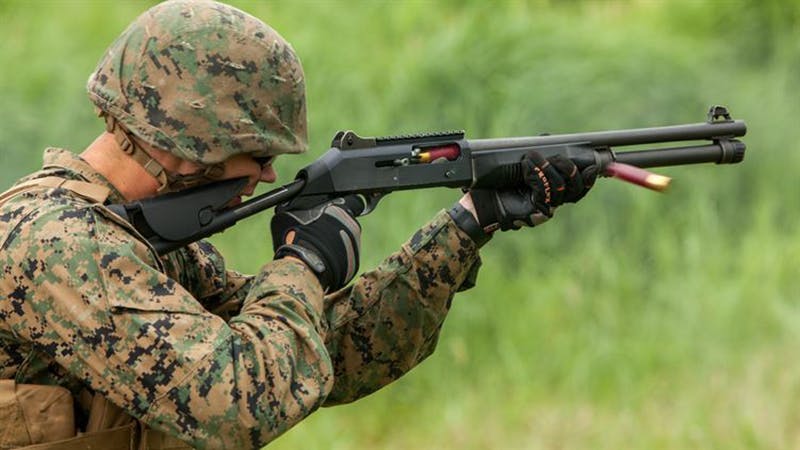
Shotgun ammo is incredibly bulky compared to 5.56. Eight shotgun shells take up the same space as 30 5.56 rounds. Shotguns also hold less ammo, with five to eight being fairly typical. This means reloading must be a trained skill in modern warfare. The combat shotgun requires a lot of specialized training to master.
Advertisement — Continue Reading Below
If an infantry squad or infantry unit is willing to train its troops to a high degree of competency with the shotgun, it can be an extremely effective combat tool in some niche scenarios.
Jungle Warfare
Jungle warfare is what got me thinking about the shotgun’s effectiveness. I live in the swampy part of Florida. It’s not necessarily a jungle, but it has some of the same restrictions. It’s tight, close quarters, and anything you run into is likely to be close. I hunt with a shotgun most often because in the swamps of Florida, the weapon shines.

Advertisement — Continue Reading Below
In jungles, the shotgun can be a capable tool because it’s likely you’ll stumble into enemy forces. The thickness of the jungle kills your vision and ability to detect threats. When you stumble into the enemy, the shotgun excels at dealing with threats. In the book Pointman, Navy SEAL Chief James Watson famously carried an eight-shot Ithaca 37 loaded with No. 4 buckshot in Vietnam.
His book Pointman details the use of the shotgun and why it was such an effective tool. The Ithaca used by Chief Watson is even on display at the Navy SEAL Museum. It was effective then, and it’s effective now. The spread of buckshot helps guarantee a hit when fired through dense vegetation.
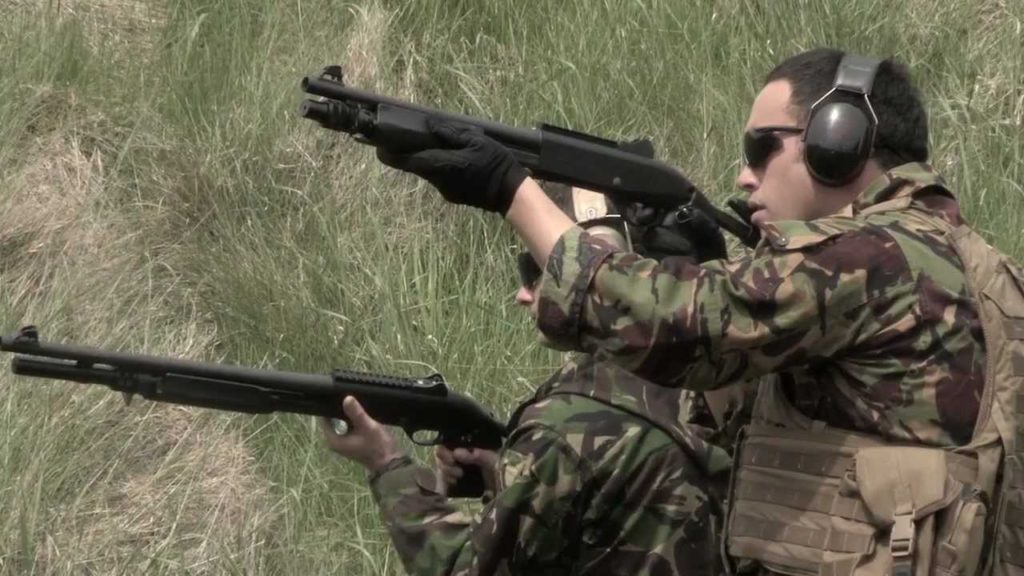
Advertisement — Continue Reading Below
It allows for a faster reactive shot, and the spread allows your aim to be less than perfect but still effective. Its spread becomes a strength in the jungle where you can’t always see your threat, but you might see muzzle flashes or slight bits of movement. While you still have to aim a shotgun, you don’t need to refine your aim as well. You can react. With the Marine Corps’ focus on fighting China in littoral areas, the shotgun could be handy for an island-hopping campaign.
Urban Warfare
Shotgun use in Iraq was centered on urban warfare. Iraq had huge, dense cities with people stacked on top of each other. Guns like the Benelli M1014 and the Mossberg 590 were used for breaching, but also for combat purposes. Cities are urban jungles, and combat shotguns excel in both jungles for the same reason.
In urban environments, you’re also often forced into close-quarters fighting. The reactive, speed-based, and decisive design of the shotgun can again excel. If your enemy pops out of a window to spray an AK at you, the combat shotgun is an excellent way to respond. It allows for a quick, decisive shot to be made.
Advertisement — Continue Reading Below

The spread of shot can help cover a multitude of sins, and while it’s not a wall of lead, accuracy is a game of inches. Multiple projectiles tend to be a decisive way to end an engagement, and even a single pellet can be lethal. Much like a jungle, the enemy has lots of places to naturally hide, and the shotgun can be a capable tool for those quick, running shots. Shotguns work well on moving birds and moving bad guys.
Night Fighting
Night fighting is another realm where speed and decisiveness win. If you’re stuck up close in a night fight, the shotgun can be an excellent tool to have. If you’re in a situation where you have night vision and the enemy does not, the fight is much likelier to be up close.
Advertisement — Continue Reading Below
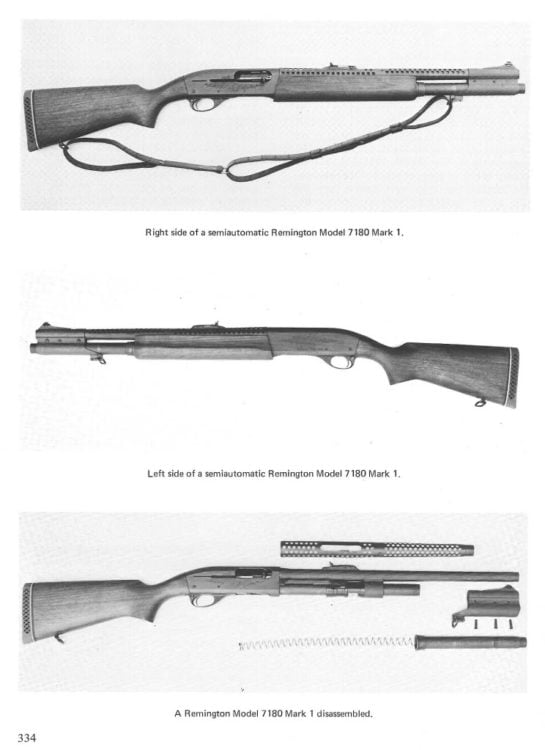
When both forces have night vision devices, the combat shotgun and its advantages fade away. Again, we come down to the need for quickly fired shots, which often don’t have refined aim. Instead of spraying with a carbine, a shotgun can deliver that spread of shot into and at a target. Being a few inches off can still result in a successful shot.
Close Ambushes
The combat shotgun excels in close ambushes. A close ambush is defined as an ambush at 50 yards or closer. Shotguns allow you to put a lot of pellets in the air very quickly with a quick reaction speed. You can shoot at muzzle flashes and have a greater chance of landing a hit. It’s not guaranteed, but your chance is a bit higher.
Advertisement — Continue Reading Below
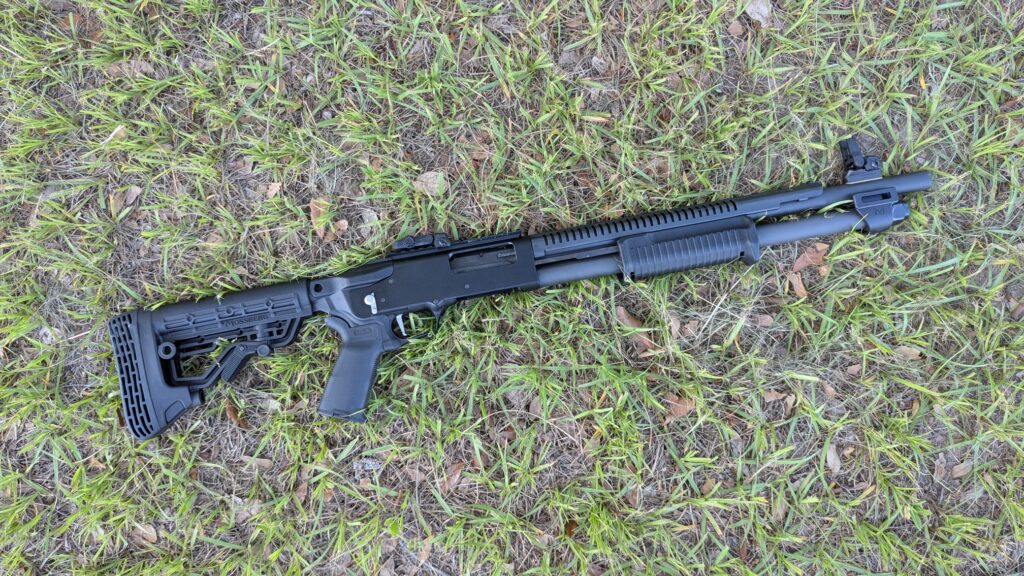
SEALs experimented with full-auto shotguns for this very task in Vietnam. Full-auto shotguns were always a bit of a mess, but semi-auto and even pump shotguns can still be excellent anti-ambush tools.
The Combat Shotgun Today
The combat shotgun can be an extremely useful tool. It’s a niche tool, and that niche design has made it less likely to be fielded and even less likely to be trained with by modern military forces. The carbine is the better tool, and if you only have time to train troops with one weapon, make it the carbine. However, the combat shotgun can be a viable weapon for the modern military
Advertisement — Continue Reading Below
